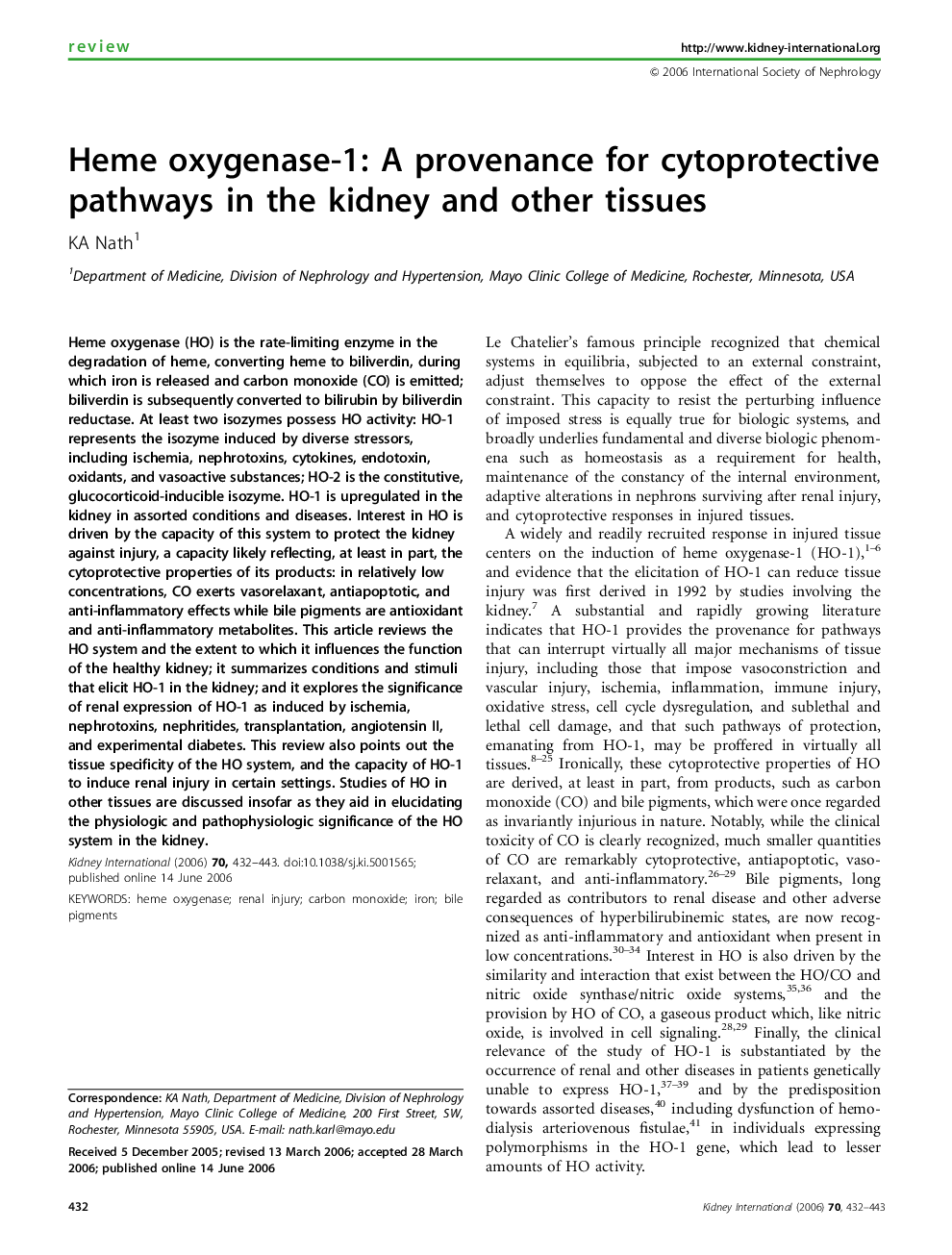| Article ID | Journal | Published Year | Pages | File Type |
|---|---|---|---|---|
| 3889855 | Kidney International | 2006 | 12 Pages |
Heme oxygenase (HO) is the rate-limiting enzyme in the degradation of heme, converting heme to biliverdin, during which iron is released and carbon monoxide (CO) is emitted; biliverdin is subsequently converted to bilirubin by biliverdin reductase. At least two isozymes possess HO activity: HO-1 represents the isozyme induced by diverse stressors, including ischemia, nephrotoxins, cytokines, endotoxin, oxidants, and vasoactive substances; HO-2 is the constitutive, glucocorticoid-inducible isozyme. HO-1 is upregulated in the kidney in assorted conditions and diseases. Interest in HO is driven by the capacity of this system to protect the kidney against injury, a capacity likely reflecting, at least in part, the cytoprotective properties of its products: in relatively low concentrations, CO exerts vasorelaxant, antiapoptotic, and anti-inflammatory effects while bile pigments are antioxidant and anti-inflammatory metabolites. This article reviews the HO system and the extent to which it influences the function of the healthy kidney; it summarizes conditions and stimuli that elicit HO-1 in the kidney; and it explores the significance of renal expression of HO-1 as induced by ischemia, nephrotoxins, nephritides, transplantation, angiotensin II, and experimental diabetes. This review also points out the tissue specificity of the HO system, and the capacity of HO-1 to induce renal injury in certain settings. Studies of HO in other tissues are discussed insofar as they aid in elucidating the physiologic and pathophysiologic significance of the HO system in the kidney.
